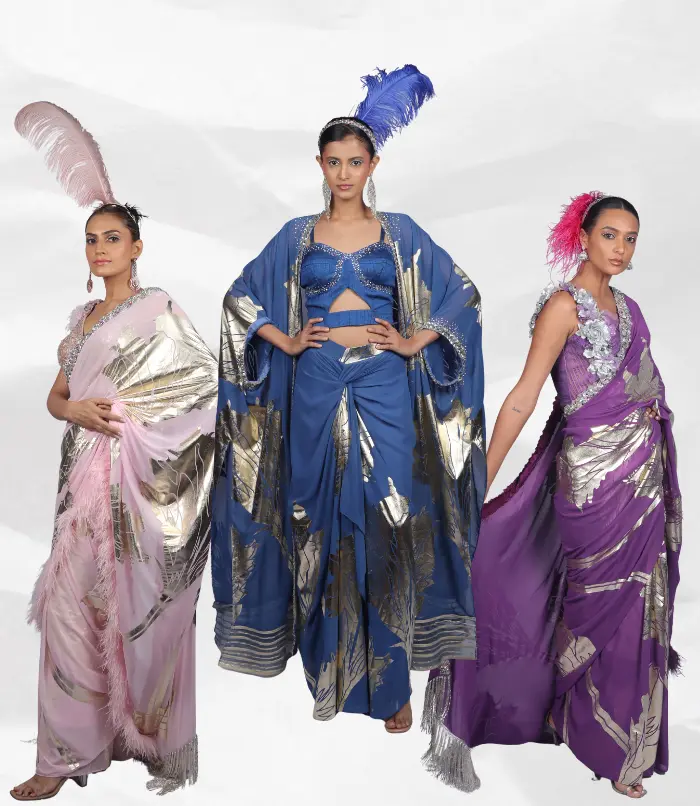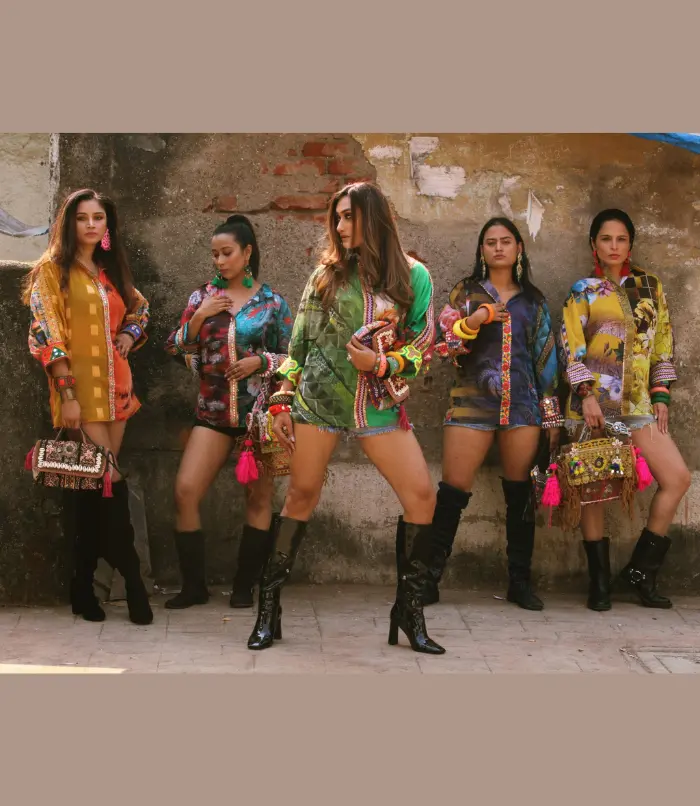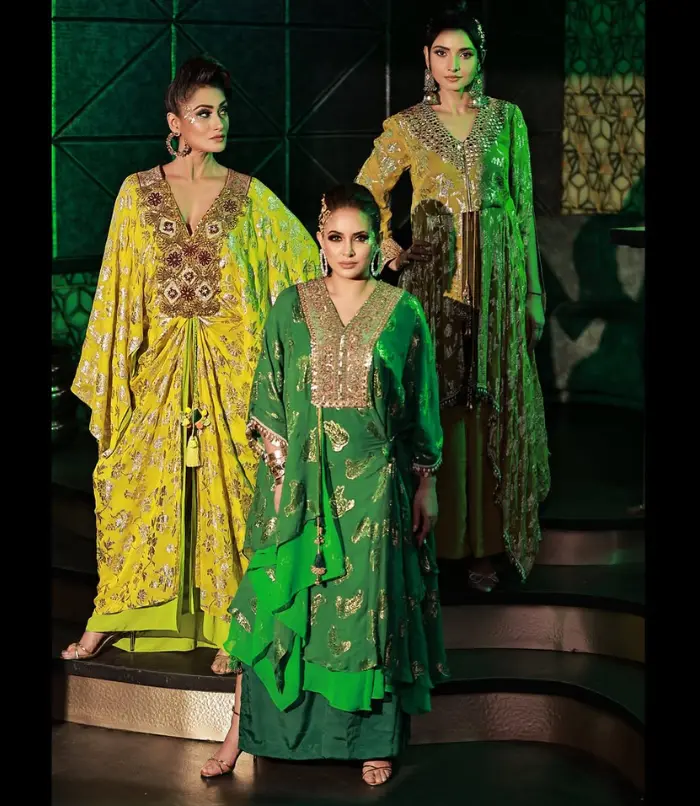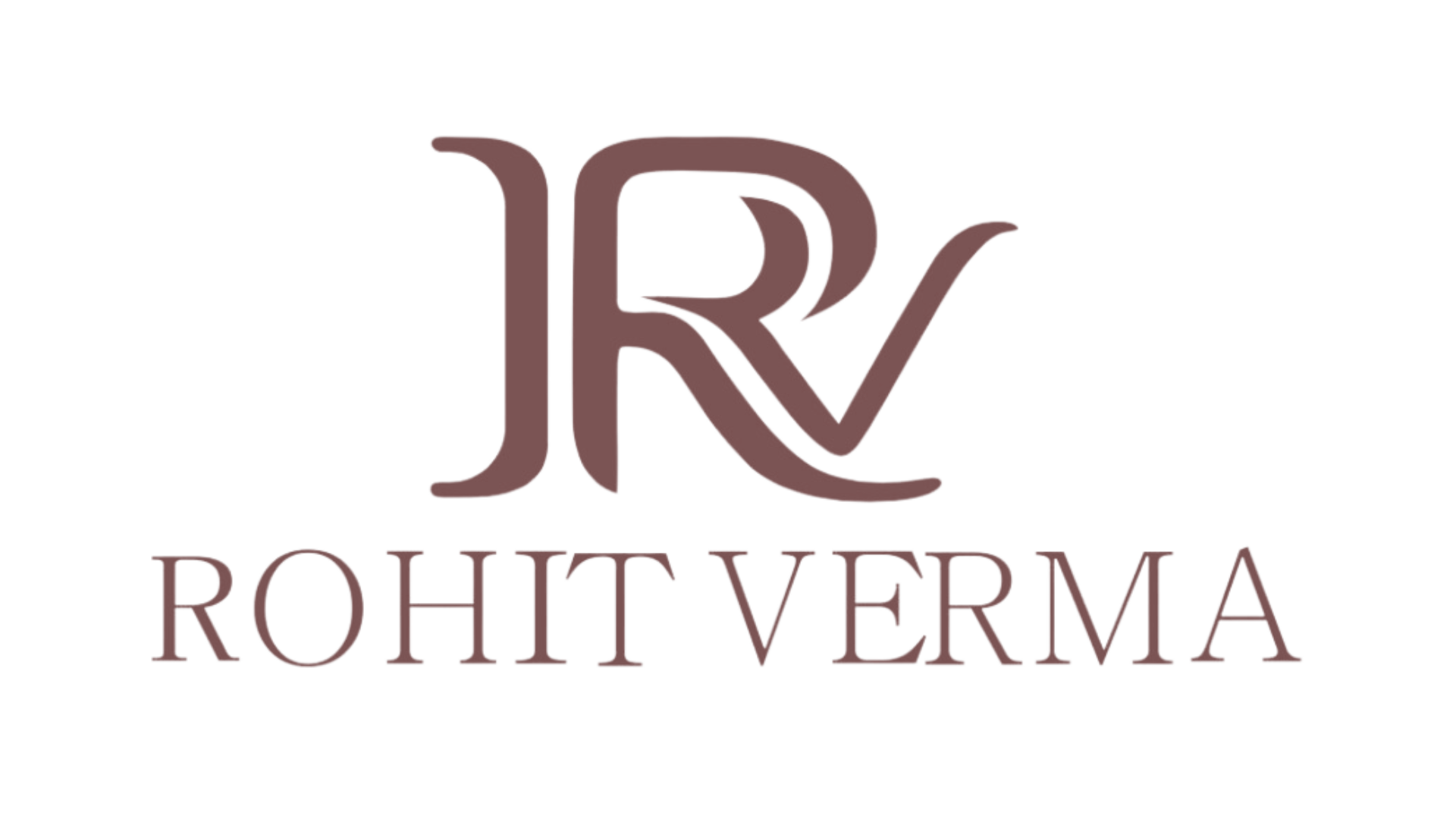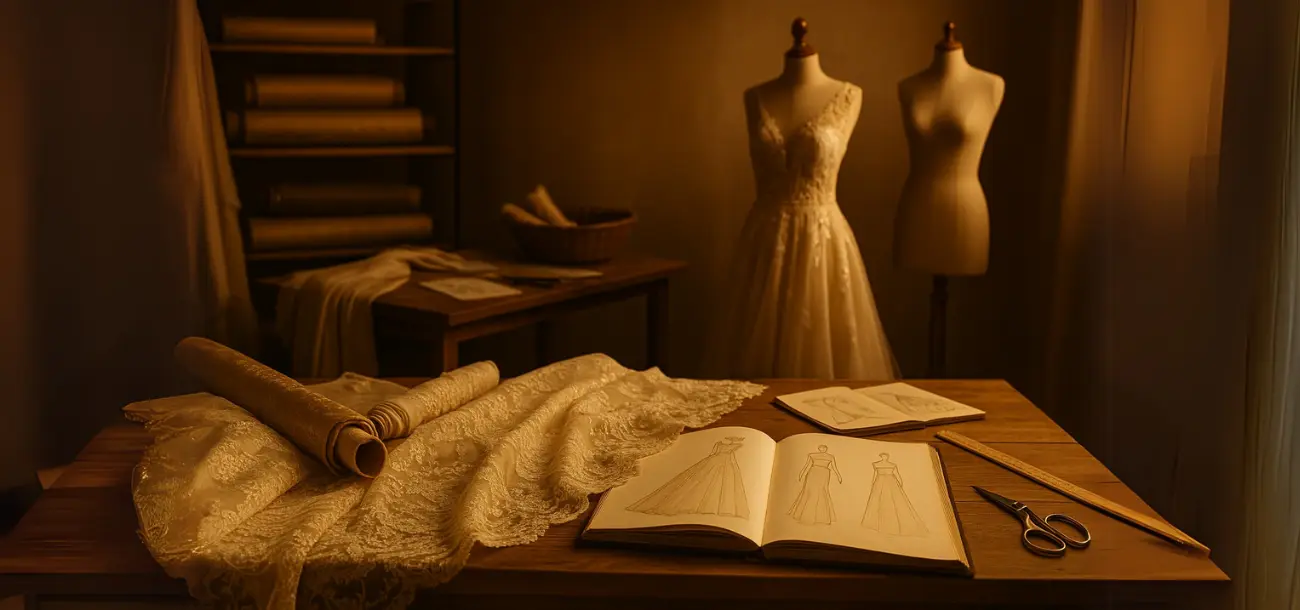From Sketchbook to Runway at Rohit Verma Maison de Mode
Introduction
Behind every stunning garment unveiled on the runway is a journey marked by imagination, intention, and intricate craftsmanship. At Rohit Verma Maison de Mode, this journey is not just about creating clothes—it is about weaving stories, heritage, and emotion into each piece. Rohit Verma believes that the process is as powerful as the final presentation. From the first sketch to the moment it catches the spotlight, every creation embodies his core philosophy: fashion should be a soulful statement.
This blog takes you through the behind-the-scenes journey of a garment at Rohit Verma’s atelier—where fabric meets purpose, and couture becomes legacy.
Step 1: Ideation – Where Creativity Begins
Every garment begins with a spark—an emotion, a cause, or a cultural symbol. For Rohit Verma, ideation is a deeply personal and reflective stage. His inspirations are drawn from Indian heritage, fine arts, mythology, and even social movements. A bride’s personal story, a transgender model’s bold spirit, or the vibrant history of a dying textile art—each can shape the vision behind a design.
This stage is marked by free-flowing thoughts, mood boards, and storytelling. Rohit Verma and his creative team delve into what the garment must represent—elegance, empowerment, or defiance—and the tone it must strike on the body and beyond.
Step 2: Sketching the Vision
Once the concept takes form, it moves to paper. Sketching is where the abstract becomes tangible. Rohit Verma works closely with illustrators to bring his vision to life, detailing fabric flow, embroidery zones, neckline structure, and silhouette dynamics.
These sketches serve as blueprints—not just for the design team but for the artisans, tailors, and stylists who will later breathe life into it. Each line in the sketch represents a creative decision that connects aesthetics with emotion. This visual map becomes the foundation upon which magic is built.
Step 3: Fabric Curation and Sourcing
No garment at Rohit Verma Maison de Mode is complete without the perfect fabric. This stage is where material meets message. Whether it’s a rich Banarasi silk for a regal bridal lehenga or sustainable handwoven cotton for a conscious couture statement, the choice of fabric is pivotal.
Rohit Verma personally curates materials from trusted artisans across India—often from rural weaving communities. This process not only ensures authentic craftsmanship but also supports India’s traditional textile economy. Every fabric swatch is evaluated for texture, drape, color fastness, and emotion—it must align with the story first imagined in ideation.
Step 4: Embroidery and Handwork Planning
The soul of many Rohit Verma garments lies in the handwork. At this stage, the design team maps out embroidery patterns, surface embellishments, and detailing. Rohit Verma brings in elements like zardozi, aari, mirror work, gota patti, and sequin layering, ensuring every stitch tells a story.
Designers and karigars collaborate over weeks—sometimes months—to bring this intricate art to life. The motifs, scale, and symmetry are all painstakingly perfected, often inspired by Indian folklore, temple art, or spiritual symbology. This stage turns fabric into canvas.
Step 5: Pattern Making and Draping
Next, the garment moves from two-dimensional sketch to three-dimensional form. Pattern masters cut and prepare each piece based on the illustrated design, translating curves, pleats, and seams with surgical precision.
Draping on mannequins or live models helps visualize flow and structure. Rohit Verma’s emphasis on flattering the body’s natural form ensures that garments look as powerful in movement as they do in stillness. Every dart and fold is shaped with intention.
Step 6: Trial Fittings and Refinement
Perfection demands iteration. At this stage, the garment is worn, assessed, and adjusted repeatedly. Rohit Verma personally oversees fittings for key pieces—whether for a bride, a showstopper, or a celebrity client.
These trials reveal opportunities for enhancement: slight nips at the waist, ease at the bust, or a hem lengthened for grace. Comfort is never compromised for style—both must coexist. The result is a garment that not only looks stunning but feels like a second skin.
Step 7: Finishing Touches and Final Styling
After the structure is perfected, the ensemble moves to styling. Accessories are selected or custom-made to match the garment’s story—headpieces, belts, shoes, and jewelry. Even the choice of makeup and hairstyle is carefully curated to complete the visual narrative.
Rohit Verma ensures that every element is harmonized for the final presentation, creating a cohesive and striking image. This attention to detail adds the final sparkle that transforms a great garment into a masterpiece.
Step 8: The Showroom Reveal or Final Client Trial
The moment of truth arrives when the finished piece is revealed to the client or displayed in Rohit Verma’s showroom. Emotions run high—clients often respond with tears, joy, and heartfelt gratitude. For many, it’s not just a dress, but a part of their journey, captured in stitches.
This intimate reveal signifies the culmination of weeks or months of creative labor. Rohit Verma personally ensures that every detail resonates with the original vision.
Step 9: Runway or Red Carpet Preparation
For garments destined for the runway or red carpet, a different kind of preparation begins. From selecting models and styling their looks to rehearsing the choreography, Rohit Verma’s team ensures that every second of the presentation reflects the garment’s essence.
Backstage is alive with energy—final touches, pinning, steaming, and syncing. Rohit Verma brings the same focus to these moments as he does to sketching, ensuring the garment’s story unfolds with grace under the spotlight.
The Role of Artisans and Studio Team
Behind every breathtaking design is a team of devoted artisans—embroiderers, weavers, tailors, and stylists—many of whom come from marginalized backgrounds. Rohit Verma has consistently provided opportunities for women, trans individuals, and rural workers, transforming his studio into a sanctuary of dignity and creative expression.
These artisans do more than just execute ideas—they pour life into them. Their skills preserve ancient techniques, sustain local economies, and give voice to generations of silent talent.
Pellentesque habitant morbi tristique senetu.

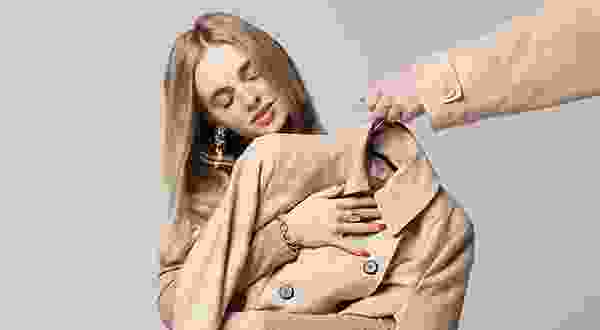
Rohit Verma’s Studio Culture and Creative Environment
Creativity flourishes where there is respect, acceptance, and passion—and that’s the ethos of Rohit Verma Maison de Mode. His studio culture is defined by collaboration, diversity, and freedom of expression. Designers are encouraged to speak boldly, and every team member’s input is valued.
It’s a space where couture isn’t dictated by trend forecasts, but by authentic vision. Young designers, interns, and artists find in Rohit Verma’s atelier not just a workplace, but a nurturing ground for ideas and innovation.
From Couture to Legacy
Some garments transcend their purpose and become heirlooms. At Rohit Verma Maison de Mode, many clients preserve his couture not just as fashion but as emotion—worn at weddings, milestones, and movements.
These pieces are often passed down, exhibited, or remembered in publications as markers of moments that mattered. Through exquisite technique and meaningful storytelling, Rohit Verma’s couture evolves into wearable history.
Challenges in the Journey
Even in the most inspired spaces, challenges arise—tight deadlines, material shortages, last-minute changes, or moments of creative block. Rohit Verma meets these with poise, relying on his team’s trust, flexibility, and shared purpose.
What sets him apart is not just how he handles pressure, but how he transforms it into an opportunity to push artistic boundaries. The journey isn’t always seamless, but it’s always sincere.
Conclusion: More Than a Dress – A Soulful Statement
From the flick of a pencil to the final runway strut, each garment at Rohit Verma Maison de Mode is a journey of passion, purpose, and profound intention. It’s not just about fashion—it’s about connection, empowerment, and cultural revival.
In every thread is a story. In every design, a voice. That’s why when a Rohit Verma garment walks the runway, it does more than captivate—it communicates.
FAQs
-
How long does it take to create a couture outfit at Rohit Verma Maison de Mode? Depending on the complexity, it can take anywhere from 3 weeks to 3 months.
-
Can clients participate in the design process? Yes, Rohit Verma encourages collaborative design with personalized consultations and fittings.
-
Does Rohit Verma work with traditional artisans? Absolutely. His brand uplifts and employs artisans skilled in embroidery, weaving, and traditional crafts.
-
Where can I witness a Rohit Verma runway collection? His shows are featured at major fashion weeks and often shared online via social media and press.
-
How can someone order a custom piece? You can book an appointment through Rohit Verma’s official website or contact his studio directly.


